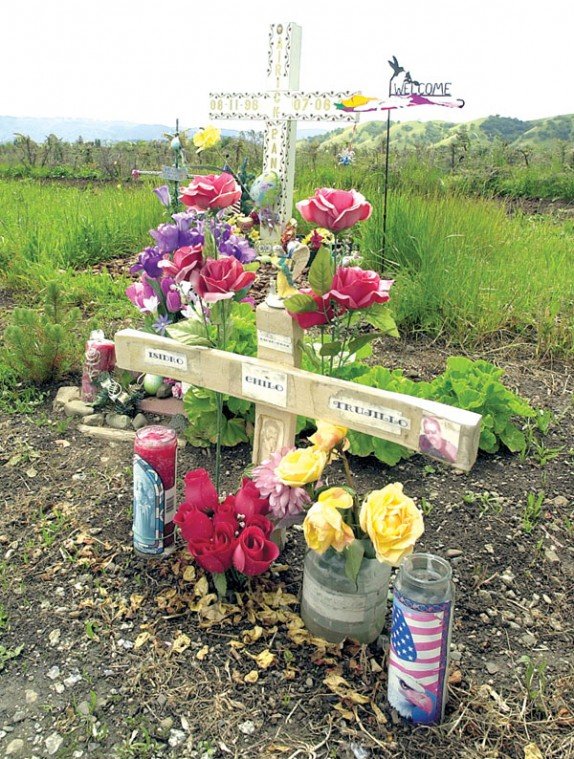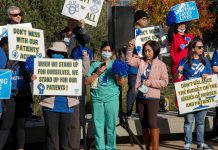GILROY
– Gilroy drivers have a much better chance of being injured or
killed while driving on county roads than on local freeways or
state highways, according to data recently released by the
California Highway Patrol.
GILROY – Gilroy drivers have a much better chance of being injured or killed while driving on county roads than on local freeways or state highways, according to data recently released by the California Highway Patrol.
Nearly 73 percent of all injury or fatal accidents recorded in the Gilroy area this year by the CHP have taken place on county roads – a figure far out of proportion when considering county roads support significantly less traffic volume than local state highways and freeways patrolled by the CHP. Statewide, only 32 percent of injury or fatal traffic accidents have occurred on CHP’s county roadways.
The CHP’s local jurisdiction includes all county roads outside Gilroy city limits, along with U.S. 101 and state highways 152 and 25.
“The biggest difference between county roads and highways is the amount of distractions drivers have to deal with,” said Brad Voyles, acting spokesperson for the CHP’s Gilroy-Hollister office. “On county roads you have cars pulling out of driveways, animals running across the road, kids and delivery trucks parked on the side of the road – freeways are much more controlled driving.”
In an effort to curb the large amount of accidents on local county roads, the State Department of Traffic Safety recently awarded the Gilroy-area CHP a $13,000 grant to increase its county road enforcement. The grant was part of $1.9 million in grants awarded for the same purpose across California, and it wail enable Gilroy’s CHP 218 hours of roving overtime patrol this year.
Since January, the CHP has already used 64 hours of the overtime, issuing 60 citations and two DUI arrests on county roads.
“We’re already seeing a big impact from the extra patrols we’re putting in,” Voyles said. “Just having an extra officer out there makes a difference. When people are commuting to San Jose on Watsonville Road or other county roads in the morning and they see a patrol car parked on the side of the road, they slow down and they remember for the next few days that there could be patrols in the area. Visibility goes a long way.”
But even with the increased patrols local county roads such as Watsonville and Uvas roads and Monterey Highway between Gilroy and Morgan Hill are bound to record high amounts of injury and fatality accidents because the collisions more often involve broadside and head-on wrecks when compared to larger highways, Voyles said.
In 2002, collisions on county roads accounted for 95 percent of the people injured in all local freeway and highway traffic accidents – compared with only 34 percent statewide, according to the CHP.
“There are intersections and driveways here so those cause broadsides; vehicles are designed to withstand head-on collisions rear-end accidents, not broadsides,” Voyles said. “County roads usually don’t have center dividers either, so that causes more head-ons. On the freeways, accidents are mostly rear-ends and rollovers.”
Since 2000, county roads monitored by the CHP have recorded more than 50 percent of the Gilroy area’s total number of traffic accidents, injury accidents, fatality accidents, people killed, people injured, driving under the influence accidents and property damage accidents, with a few minor exceptions in 2001, according to the CHP.
The CHP does not keep data on traffic volume, but Voyles said the amount of annual traffic on local freeways and highways is “much higher” than on county roads.
In 1998, CHP recorded 195 accidents on Gilroy’s county roads; that number increased to 201 in 1999 and 200 in 2000. Since then, the number of accidents have steadily declined to 190 in 2001, 187 in 2002 and 37 so far this year, although percentages, when compared to state roads, remain inordinately high.
In 2002, 66 percent of fatal accidents in the area occurred on county roads, compared with 29 percent in the rest of California. So far this year in the Gilroy area, that figure has dropped to 50 percent, largely thanks to the increased patrol hours, Voyles said.
“We’ve been getting a lot of calls about people passing on double yellow lines and things like that lately,” Voyles aid. “That’s just the nature of county roads, but we are already seeing the accidents go down since the first of the year, and that’s encouraging. We plan to keep making our presence known and hope the collisions decrease.”














